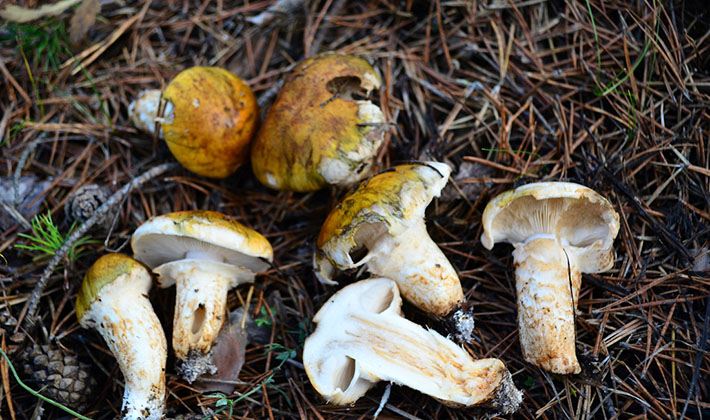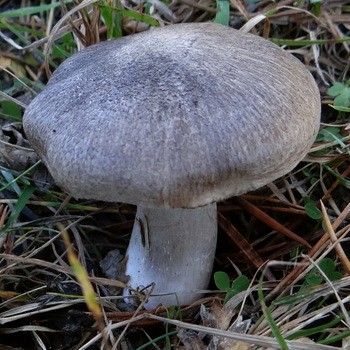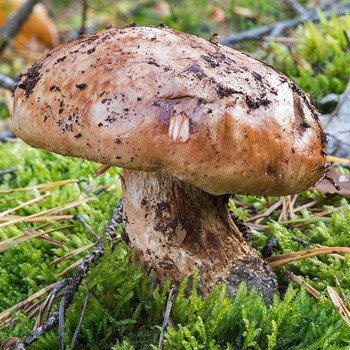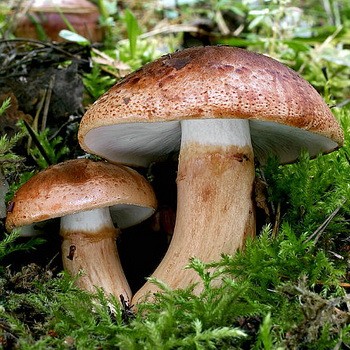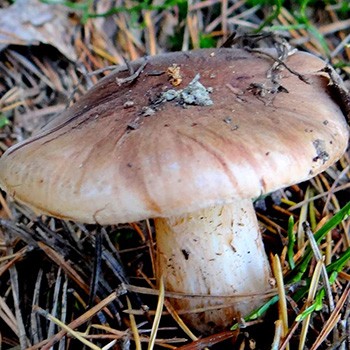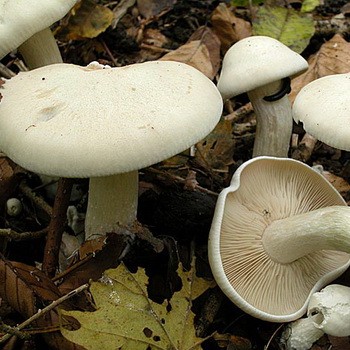Ryadovka openkovidny: photo, description and application

We suggest that you familiarize yourself with the appearance of the row of chamomile due to the photo and description.
Description of the row of openings (bandaged)
Latin name: Tricholoma Focale.
Family: Ordinary.
Synonyms: bandaged bandage, turtle. Latin synonyms: Armillaria zelleri, Tricholoma zelleri.
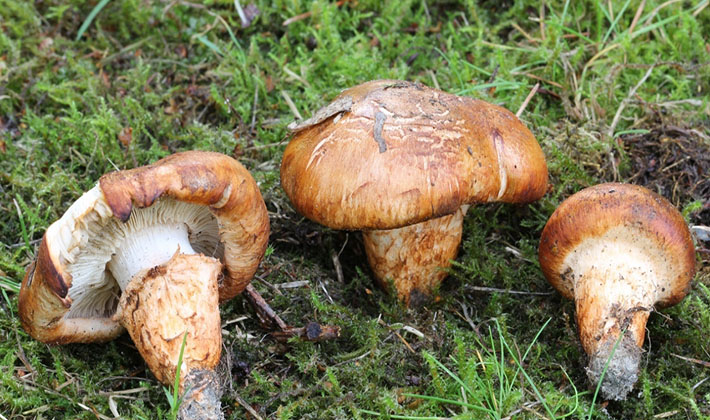

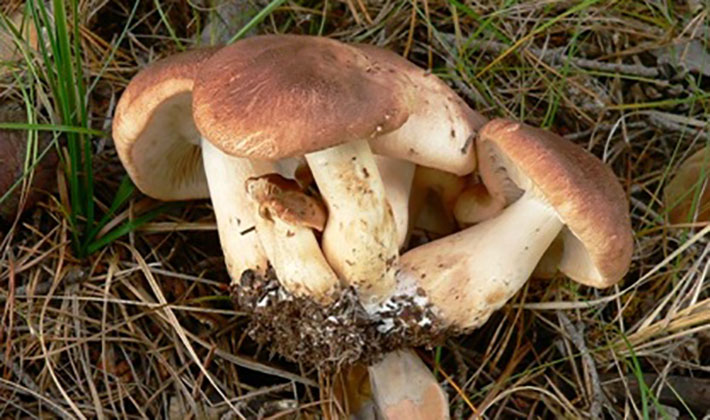
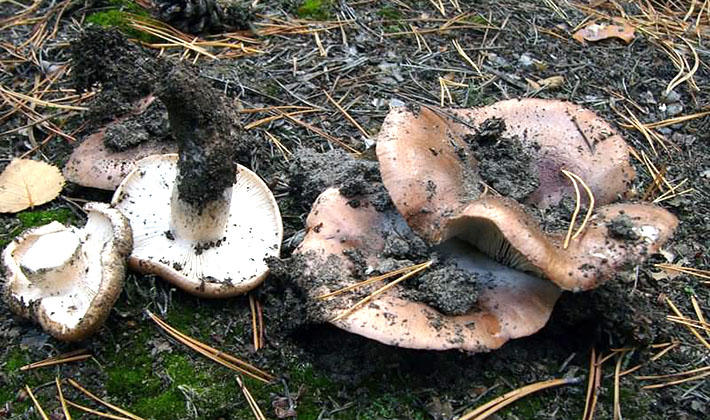
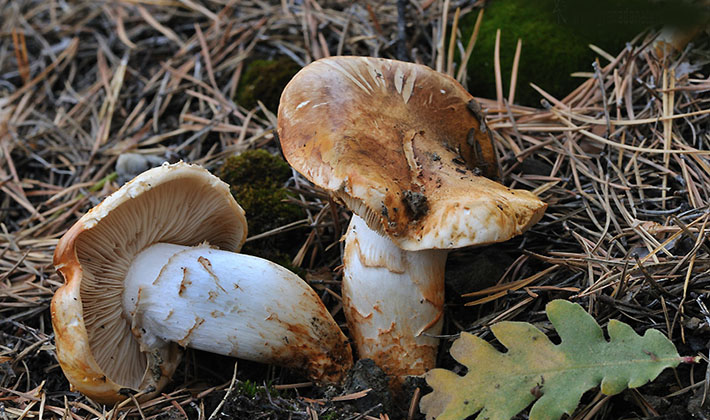
Hat: with a diameter of 5 to 10 cm, sometimes reaches 12 cm. Young specimens have a convex shaped hat, however, as it grows older, it straightens and becomes convex-spread, and then almost flat. It happens to be fibrous-scaly, the edges are often cracked, sometimes the remains of a flaky coverlet can be observed on their surface. The photo shows that the bandaged dress has a reddish-brown, orange-red or brick-brown hat, the edges of which are down.
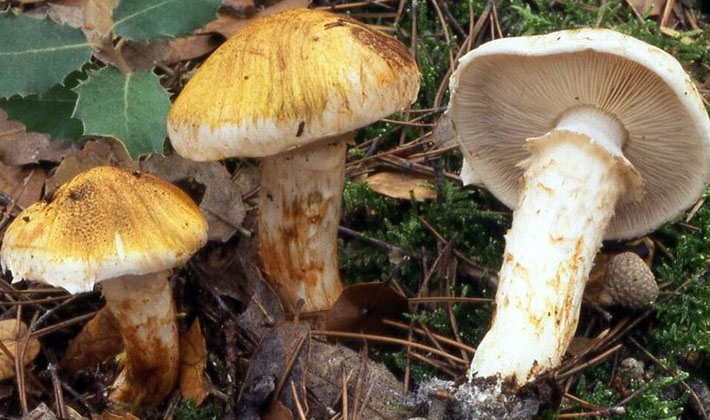 Leg: long (from 4 to 10 cm) and thick (up to 3 cm in diameter), cylindrical, fusiform, sometimes narrowed at the base. At a young age, the structure is solid and dense, and in the old it becomes hollow, longitudinally fibrous. On the leg there is also a skirt ring, the surface above which is painted white, mealy. The lower part, extending from the ring to the very bottom, is the same color as the hat. Sometimes this area can be covered with small scales. The leg of the row of ceps is presented in the photo below:
Leg: long (from 4 to 10 cm) and thick (up to 3 cm in diameter), cylindrical, fusiform, sometimes narrowed at the base. At a young age, the structure is solid and dense, and in the old it becomes hollow, longitudinally fibrous. On the leg there is also a skirt ring, the surface above which is painted white, mealy. The lower part, extending from the ring to the very bottom, is the same color as the hat. Sometimes this area can be covered with small scales. The leg of the row of ceps is presented in the photo below:
Pulp: white, dense, elastic, has a faint smell of fresh flour and a slightly bitter taste, sometimes completely tasteless. As for the leg of the fungus of the chaffer, the flesh is fibrous. Under the skin, the flesh has a slight reddish tint.
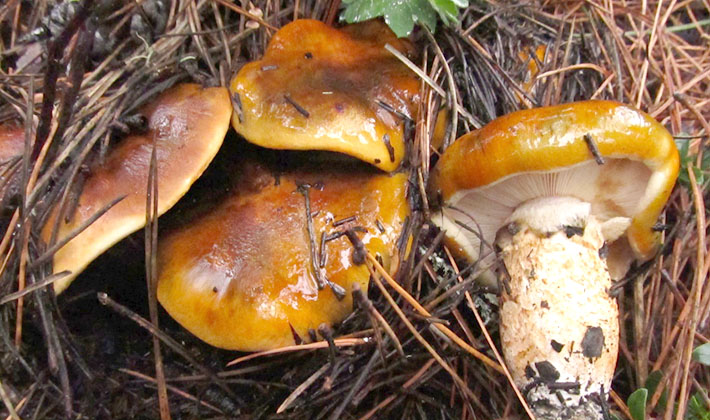 Plates: notched, frequent, partially adhered to the pedicle, white or slightly yellowish. In young specimens, the plates are completely hidden under the fibrous coverlet of a reddish-brown hue. With age, this coverlet breaks, leaving traces.
Plates: notched, frequent, partially adhered to the pedicle, white or slightly yellowish. In young specimens, the plates are completely hidden under the fibrous coverlet of a reddish-brown hue. With age, this coverlet breaks, leaving traces.
Disputes: ovoid or spherical, white.
Edibility: conditionally edible mushroom, but abroad it is classified as poisonous. It can be eaten only after preliminary heat treatment. After boiling for 30 minutes, the broth must be drained, without the possibility of further consumption.
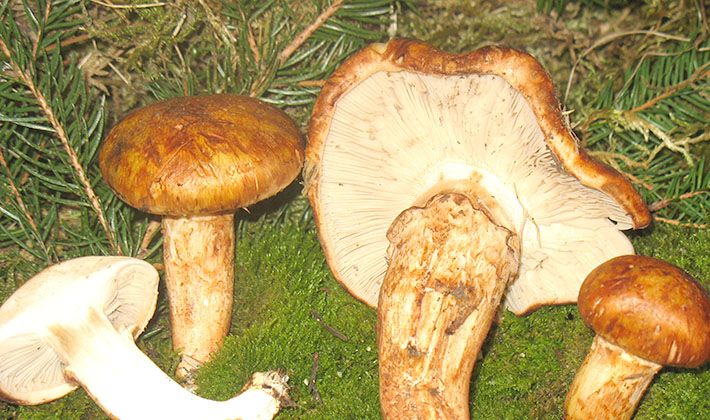 Similarities and differences: it is almost impossible to confuse with any poisonous representative. The only species that looks like a row of bandaged ones is a white-brown row (Tricholoma albobrunneum). The latter also grows in groups, preferring pine trees. However, the mentioned species have noticeable differences: the white-brown rowing has a very strong bitterness and an unusual two-zone, even leg. Although there is information that this mushroom is boiled, and then eaten. A photo and description of the mushroom of the chanterelle mushroom will help to correctly distinguish it from inedible similar species.
Similarities and differences: it is almost impossible to confuse with any poisonous representative. The only species that looks like a row of bandaged ones is a white-brown row (Tricholoma albobrunneum). The latter also grows in groups, preferring pine trees. However, the mentioned species have noticeable differences: the white-brown rowing has a very strong bitterness and an unusual two-zone, even leg. Although there is information that this mushroom is boiled, and then eaten. A photo and description of the mushroom of the chanterelle mushroom will help to correctly distinguish it from inedible similar species.
The use and distribution of openings
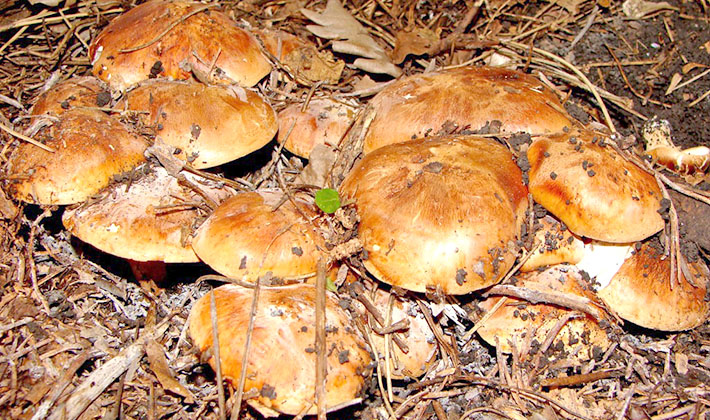 Application: it is used fresh (after boiling), fried, salted and pickled. In addition, from the bandage tied up, a very tasty mushroom caviar is obtained, as well as the first dishes.
Application: it is used fresh (after boiling), fried, salted and pickled. In addition, from the bandage tied up, a very tasty mushroom caviar is obtained, as well as the first dishes.
Distribution: grows in pine forests, preferring green mosses and sandy soils. It grows in small groups or singly from mid-August to mid-October. Some specimens can grow even after the first snow, but the weather does not allow them to mature until the end, so that spores appear. The fungus is widespread in the forests of Europe and North America. On our territory is less common, and in some regions even listed in the Red Book.
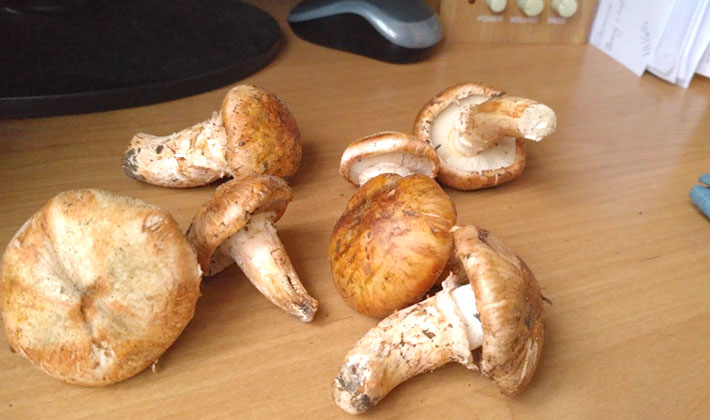 Those mushroom pickers who are familiar with the appearance and taste of Tricholoma Focale, say that it is a very beautiful, strong fruiting body. In addition, this representative has a juicy, dense pulp that does not crease or crumble. Many people are impressed by the chickweed, because its structure perfectly tolerates both heat treatment and freezing. Thanks to this feature, the mushroom has a great advantage - unique crispness. Experienced fans of "silent hunting" note that it is better to use young and closed fruiting bodies. Sometimes not all the “fans” of mushroom dishes like the smell of rowing, but this is a fixable thing - you can get rid of a specific aroma with the help of spices and spices. Recall that during heat treatment, the broth from the mushrooms must be drained, since it acquires the smell of soda and a dark color, and it is unlikely to cause appetite. It is best to boil a row in 2 waters for 10 minutes for each run.
Those mushroom pickers who are familiar with the appearance and taste of Tricholoma Focale, say that it is a very beautiful, strong fruiting body. In addition, this representative has a juicy, dense pulp that does not crease or crumble. Many people are impressed by the chickweed, because its structure perfectly tolerates both heat treatment and freezing. Thanks to this feature, the mushroom has a great advantage - unique crispness. Experienced fans of "silent hunting" note that it is better to use young and closed fruiting bodies. Sometimes not all the “fans” of mushroom dishes like the smell of rowing, but this is a fixable thing - you can get rid of a specific aroma with the help of spices and spices. Recall that during heat treatment, the broth from the mushrooms must be drained, since it acquires the smell of soda and a dark color, and it is unlikely to cause appetite. It is best to boil a row in 2 waters for 10 minutes for each run.
